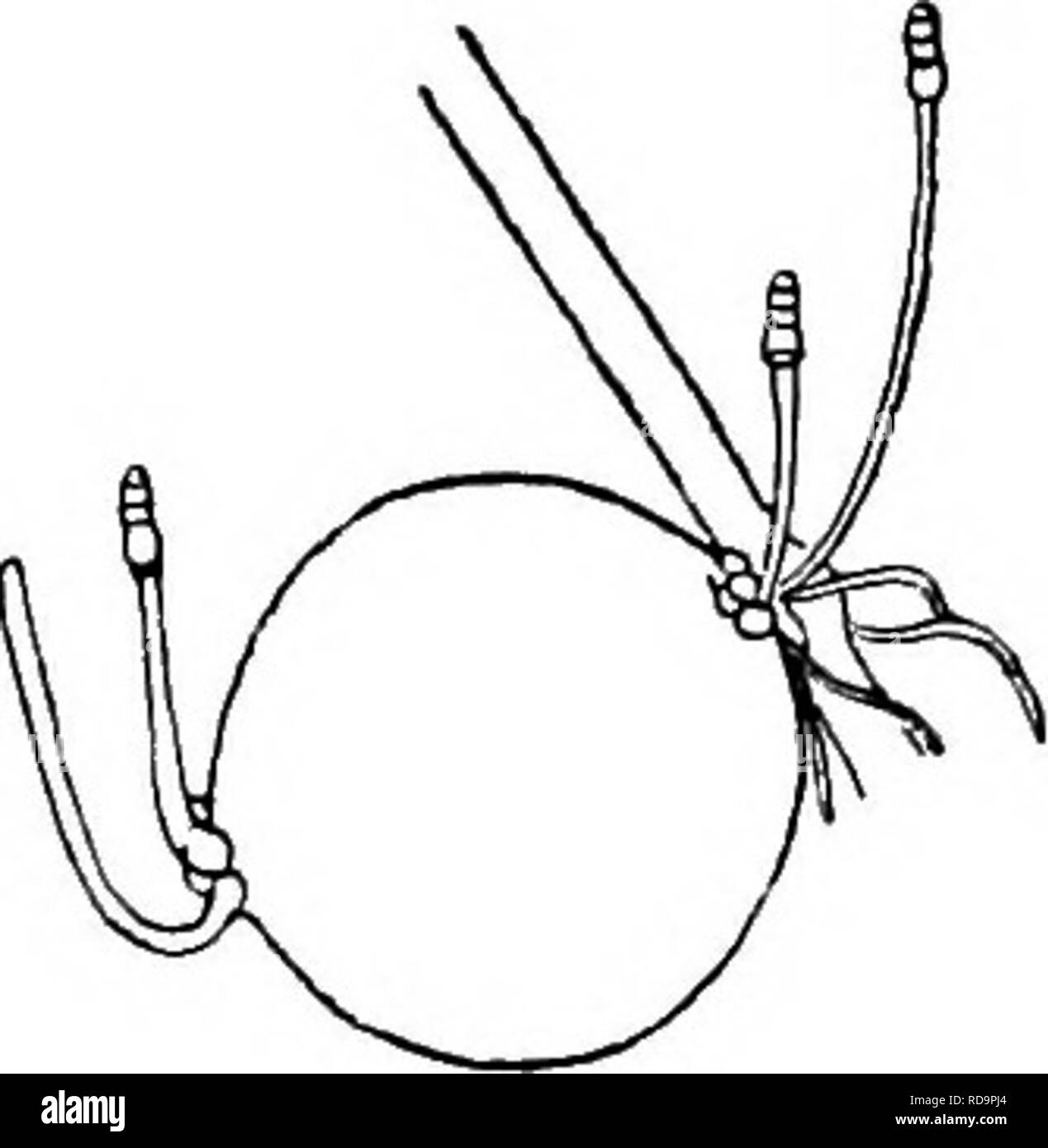. The British Charophyta. Characeae. Fio. 11.—Root-bulbils (spherical type) of Chara aspera (after Giesenhagen). i. Root-node showing double-footed joint with three bulbils, two nearly spherical, and one cylindrical; also some rhizoids ( x c. 11). ii. Eoot-node bearing one spherical bulbil, with young plants arising from nodes at basal and distal ends ( x c. 13). Charophyte throughout the year either in its natural condition or in cultivation will do well to examine the roots from time to time to ascertain if bulbils are being produced. There are three distinct types of bulbil: (1) con- sistin

Image details
Contributor:
The Book Worm / Alamy Stock PhotoImage ID:
RD9PJ4File size:
7.1 MB (126.9 KB Compressed download)Releases:
Model - no | Property - noDo I need a release?Dimensions:
1562 x 1599 px | 26.4 x 27.1 cm | 10.4 x 10.7 inches | 150dpiMore information:
This image is a public domain image, which means either that copyright has expired in the image or the copyright holder has waived their copyright. Alamy charges you a fee for access to the high resolution copy of the image.
This image could have imperfections as it’s either historical or reportage.
. The British Charophyta. Characeae. Fio. 11.—Root-bulbils (spherical type) of Chara aspera (after Giesenhagen). i. Root-node showing double-footed joint with three bulbils, two nearly spherical, and one cylindrical; also some rhizoids ( x c. 11). ii. Eoot-node bearing one spherical bulbil, with young plants arising from nodes at basal and distal ends ( x c. 13). Charophyte throughout the year either in its natural condition or in cultivation will do well to examine the roots from time to time to ascertain if bulbils are being produced. There are three distinct types of bulbil: (1) con- sisting mainly of a large nearly spherical cell (Fig. 11), (2) more or less amorphous, consisting of an agglo- meration of numerous small cells (Figs. 12 and 13), . (3) star-shaped, being modified branchlet - whorls (Fig. 15). The first type of bulbil, those of spherical form, are found among British species, in Ghara aspera, C~. Please note that these images are extracted from scanned page images that may have been digitally enhanced for readability - coloration and appearance of these illustrations may not perfectly resemble the original work.. Groves, James; Bullock-Webster, George Russell, 1858- joint author. London, The Ray society